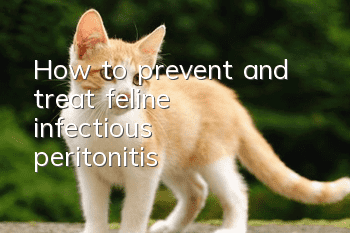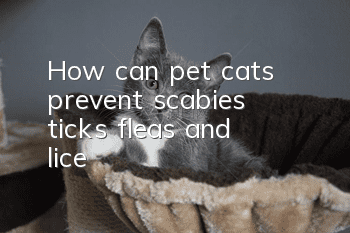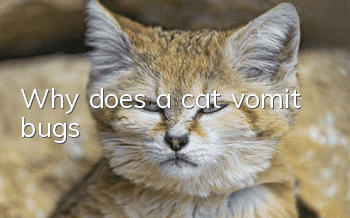How to prevent and treat feline infectious peritonitis?

This disease is more likely to occur in young adult cats under four years old, especially in cats that are kept in groups. The course of the disease may be sudden (more common in young cats) or slow and lasting over several weeks.
The initial symptoms are not obvious, but may include loss of appetite, poor energy, weight loss, and persistent fever (39.5 to 40.6 degrees: higher at dusk, and will slowly decrease after nightfall). Later symptoms will be clearly divided into dry and wet types:
Wet type:
Most affected cats die within two months of onset.
There is high protein exudate in the chest and abdomen.
Depending on the amount of pleural effusion, symptoms range from asymptomatic to asthma or dyspnea.
Progressive painless abdominal enlargement, and male cats may have enlarged perineum.
Vomiting or diarrhea may occur.
Moderate to severe anemia.
Dry type:
Symptoms such as cloudy eyes, pyometra, miosis, and visual impairment.
A small number of cases are accompanied by multiple progressive neurological symptoms, including hindquarter paralysis, convulsions, tremors, nystagmus, and personality changes.
Nodular lesions appear in the liver, kidneys, spleen, lungs, omentum and lymph nodes; mesenteric lymph nodules can be palpated on abdominal palpation.
Anemia and jaundice.
Clinically, cats suffering from this disease have a mortality rate of 95%, but there are still some cats in good physical condition (such as good appetite, no pernicious anemia, no leukemia infection or early dry type), which can be treated by The condition should be re-evaluated after 4 weeks of drug-assisted treatment, and the drug should be gradually weakened after 3 months. Drug treatment uses the following:
Immune suppression and anti-inflammatory effects: high-dose steroids, cytotoxic drugs.
Prevention of secondary bacterial infections: broad-acting antibiotics
Antiviral drugs
Supportive therapy: forced feeding (esophageal or gastric tube), fluid infusion to correct dehydration, thoracentesis to relieve respiratory symptoms.
As the saying goes, prevention is better than cure; for the prevention of this disease, in addition to vaccines, management of the living and breeding environment and regular implementation of serum antibody testing.
The vaccine is administered intranasally to cats over 16 weeks old, with two doses administered 3 to 4 weeks apart.
- Why is it better not to choose a black British Shorthair cat when raising a British Shorthair cat?
- Siamese cat personality introduction and nine personality traits
- Why do some cats still have bad stools after taking probiotics?
- You can tell if your cat is dehydrated in three seconds
- What does cat biochemical examination mean?
- It’s best to buy a cat after a few months
- Can Siamese cats drink pure milk?
- What to do if a Persian cat vomits
- Cats have symptoms of parasites
- What are the symptoms if a cat is not dewormed?



